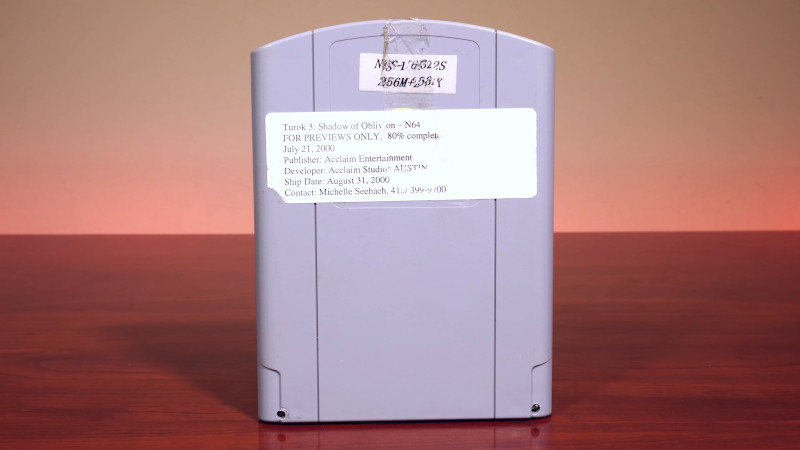Retro gaming enthusiasts have always had great interest in rarities outside the usual commercial titles. Whether they be early betas, review copies, or even near-complete versions of games that never made it to release, these finds can be inordinately valuable. [Modern Vintage Gamer] recently came across a pre-release version of Turok 3 for the Nintendo 64, and set about dumping and preserving the find. (Video, embedded below.)
With one-off cartridges like these, it’s important to take the utmost care in order to preserve the data onboard. Simply slapping it into a regular console might boot up the game, but carries with it a non-zero chance of damaging the cart. Instead, the first step taken was to dump the cart for archival purposes. When working with a prototype cart, commodity dumpers like the Retrode aren’t sufficient to do the job. [Modern Vintage Gamer] notes that a Doctor V64 or Gameshark with a parallel port could work, but elects to use a more modern solution in the form of the Ultrasave and 64drive.
With the cartridge backed up and duplicated onto the 64drive, the code can be run on a real console without risk of damage to the original. At first glance, the game appears similar to the final retail version. Analysis of the dump using a file comparison tool suggests that the only differences between the “80% Complete” ROM and the retail edition are headers, leading [Modern Vintage Gamer] to surmise that the game may have been rushed to release.
While in this case the dump didn’t net an amazing rare version of a retro game, [Modern Vintage Gamer] does a great job of explaining the how and why of the process of preserving a vintage cartridge. We look forward to the next rare drop that shakes up the retro world; we’ve seen efforts on Capcom arcade boards net great results. Video after the break.















I’ve seen this video some time ago, but to me it appears more a commercial for those dumpers then this is a better sollution.
Imho the best way would be to inspect the pcb, chips and connections first, especial if you are this concerned like him If everything looks fine nothing is wrong with using original hardware (check if the voltages are within spec of the n64). If pcb and chips are ok clean the contacts. Otherwise fall back to slavage the memory chips and read them directly.
The point is that the cart may be faulty, and you may only get one shot at dumping it before it fails. You don’t want to waste that one chance on just playing it in a console. So you dump it *before doing anything else*, and if it goes well then you can consider playing the cart directly.
I’m not talking about playing but using a native N64 dumper. Sorry this wasn’t clear in the comment.
In the vid he dismiss this option in favor of the new external device.
I’ve seen this video some time ago, but to me it appears more a commercial for those dumpers then this is a better sollution.
Imho the best way would be to inspect the pcb, chips and connections first, especial if you are this concerned like him If everything looks fine nothing is wrong with using original hardware (check if the voltages are within spec of the n64). If pcb and chips are ok clean the contacts. Otherwise fall back to slavage the memory chips and read them directly.
Indeed! *Worried about contacts being worn out* > *plugs it into dumper*.
Dumping data from carts and old or odd storage to modern storage is fascinating.
Are you me ?
To safely dump an unknown cart, you really should inspect the board of the cart first. There is also a good possibility dumping the “memory” of the cart is not going to be sufficient to play the cart if there is other hw on the board. And also no guarantee any dumper will be able to actually access the memory directly, consider if there is a processor in between.